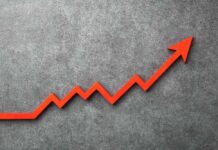
Record-high beef prices have soared nearly 50% in just five years, forcing hardworking families to cut back on traditional American meals while small ranchers struggle to survive under crushing regulations and inflation.
The average price for ground beef hit an alarming $5.80 per pound in April 2025, while sirloin steak costs have skyrocketed to $12.33 per pound.
These jaw-dropping prices come as the U.S. cattle inventory has plummeted to its lowest level since 1951, creating a perfect storm for consumers already stretched thin by inflation.
Today’s economic policies have created a cascade of problems for American cattle producers.
Soaring feed costs, land prices, and interest rates have forced many family ranches to downsize herds or exit the business entirely.
Meanwhile, persistent drought conditions across cattle country have devastated grazing lands, further straining the industry.
Stephen Kirkland, a Texas rancher struggling to keep his operation afloat, has been trying to shield customers from the worst price increases at his Fort Worth butcher shops.
“We are very, very conscious of how high the prices are in the meat case,” Kirkland explained. Still, the economic reality is unavoidable.
“But as cattle prices increase, we’re left with no other choice. If we want to stay profitable, we want to stay in business at all, you’ve got to go up on your price,” he remarked.
The cost of raising cattle has exploded, with the price of a single steer jumping from $1,500 to nearly $2,400.
These costs do not just vanish – they were passed on to American consumers at the grocery store.
Ordinary shoppers like Darlowe Torkelson have been left frustrated and looking for relief: “I haven’t found it, I’d like to see it back down.”
The administration’s misguided trade policies and tariffs on beef imports from countries like Brazil, Australia, and New Zealand are expected to drive prices even higher.
These tariffs particularly impact lean beef trimmings that are typically blended with domestic beef, further restricting supply when Americans most need affordable options.
The uncertainty created by government policies is strangling growth in an industry that desperately needs to expand to meet demand.
As one agricultural economist noted, “Uncertainty does not incentivize growth in the industry. It does the opposite.”
This regulatory burden makes it nearly impossible for ranchers to plan for the future or invest in larger herds.
According to USDA forecasts, there is no relief in sight – beef prices will continue climbing through 2025.
Ranchers face impossible choices, like whether to keep non-pregnant cows despite astronomical feeding costs.
These business decisions ultimately mean fewer cattle, less beef, and higher prices at your local grocery store.
American families are now forced to limit beef purchases as this staple of the American diet becomes a luxury item.
Ultimately, the administration’s economic policies have created a perfect storm of high costs, limited supply, and regulatory burdens that hit both hardworking ranchers and everyday consumers.



















